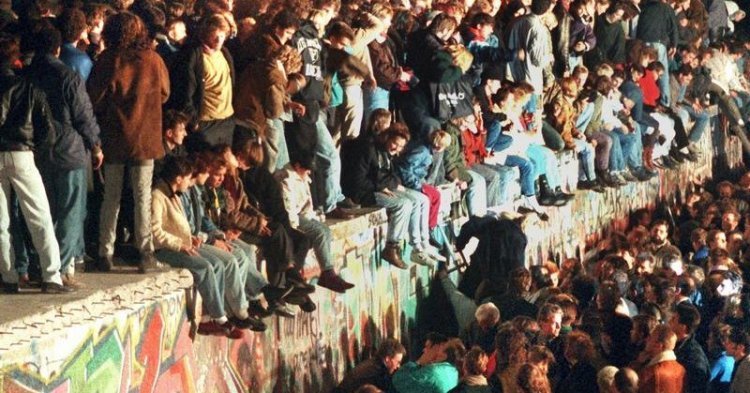More than 28 years a huge wall was dividing Berlin, the capital of East- and West-Germany, in two completely separate entities. The western part of the city was an enclave within the territory of the DDR (Deutsche Demokratische Republik / German Democratic Republic). For Berlin citizens it was almost impossible to cross the border which often separated families, former neighborhoods, streets and public spaces.
At the evening of the 9th November 1989 Günter Schabowski, a high ranking member of the SED (Sozialistische Einheitspartei Deutschlands / Socialist Unity Party of Germany), announced during a live press conference that East-Germans could from now on travel freely to the West. His statement (which is today mostly conceived as a misunderstanding) caused thousands of Berlin citizens to gather at the border checkpoints and demand their new right of passing the border. The border guards were overburdened with the situation and finally opened the check points. The news of the ‘open borders’ traveled incredibly fast and the crowds at the Berlin wall grew every minute. West-Berlin welcomed the people that arrived from the East with applause, people were celebrating together on the streets: a dream that very few had dared to dream came true peacefully.
How do these events that took place 20 years ago affect the European youth? Most of us can hardly remember the fall of the Berlin wall themselves and do not feel connected to the events like the generation of our parents who really experienced the division of Germany and Europe. Nevertheless often even young people – especially Germans – have memories of this historic day in their life. I remember sitting in front of the TV with my father, who could hardly believe what was going on and explaining to me at the age of five that a wall in Germany which was separating families and friends for decades now ceased to exist. Even though I was obviously not able to grasp the full meaning of this act, I sensed very clearly that something of importance was going on. And it is exactly this feeling that still unites people from all generations when they think of the 9th of November 1989.
The fall of the Berlin wall and the end of the separation of Germany also has huge implications on the shape of today’s Europe.
Although it is first and foremost an event of German-German history, the fall of the Berlin wall and the end of the separation of Germany also has huge implications on the shape of today’s Europe. Without the end of the iron curtain the 12 eastern member states would not have joined the European Union in 2004, the geographical center of Europe would be divided by strong boarders and the European identity would most probably never be as comprehensive and diverse as it is today.
Despite the huge efforts that were already made in the past 20 years and the great success of welcoming former Soviet Union states in the EU, the path is still far from being completed. Reality shows that the European continent is not as unified as it could be. Especially in the Balkan region people are affected by strict visa requirements and cannot travel freely within Europe. Of course these limitations are different from those that eastern Germans had to face during their time in the DDR, but in today’s globalised world they restrict the freedom of movement of these Europeans to a similar extent than real walls did in the world of 20 years ago. This is one of the reasons why the Young European Federalists (JEF) are engaging in a pan-European street action today, where they symbolically tear down walls in various cities around Europe. ‘EUROPE, tear down this wall!’ is the slogan that should remind us of the still existing walls, even though they might not be made from bricks but from bureaucracy and legal requirements.
The anniversary of the fall of the Berlin wall can be considered as a reminder of the enormous European achievements of the past, as well as of the challenges which still lie in front of us.


Follow the comments: |
|
